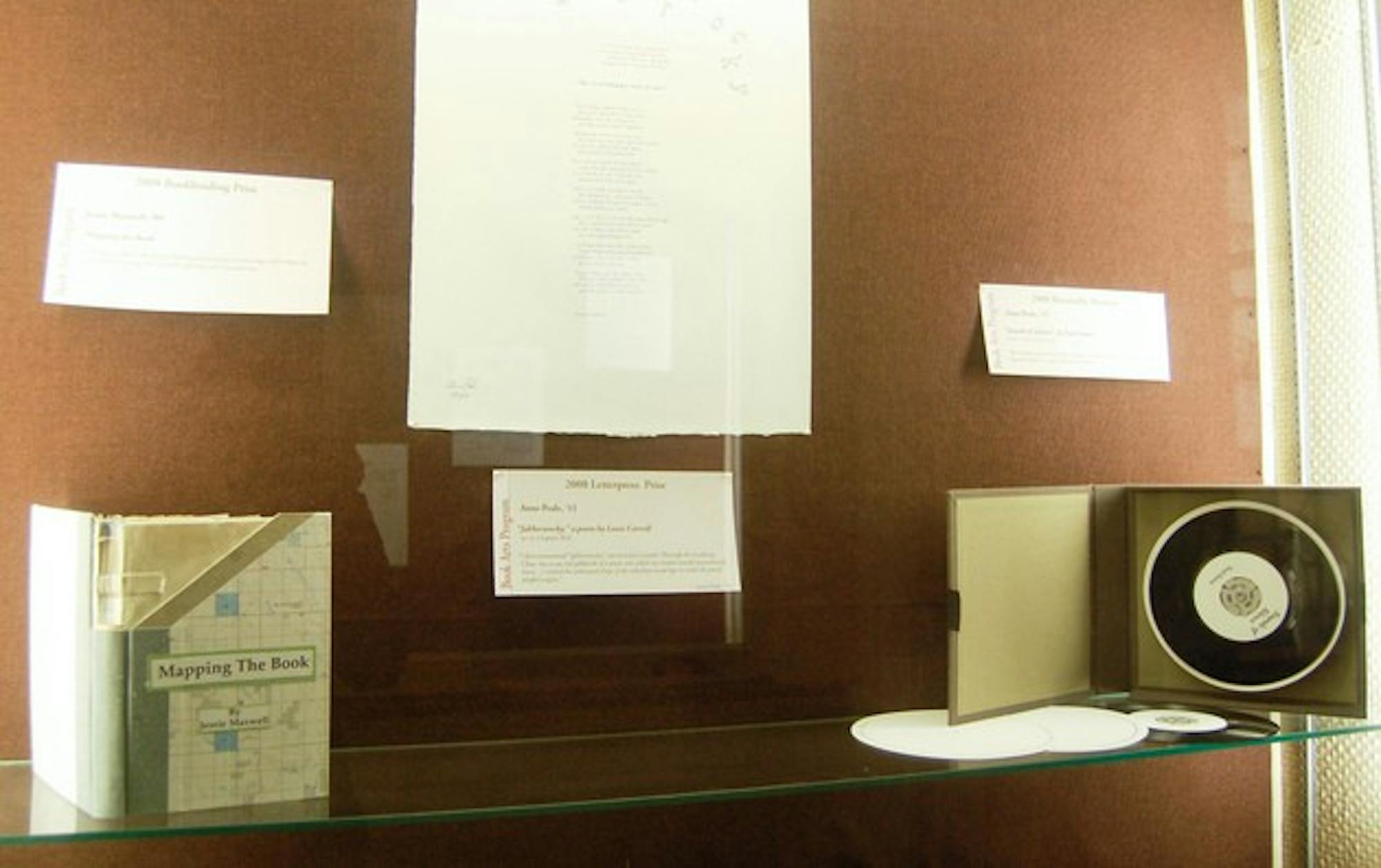Santa-Donato discovered the Book Arts Program the fall after returning from Mexico while taking English 60, "History of the Book." The course introduced her to the Book Arts Program's studios in the basement of Baker Library. Santa -Donato used the studios to print and bind a book about her time abroad, for which she won Dartmouth's $500 Book Arts Grand Prize last spring.
Santa-Donato won the prize last year for a book she created using text from journal entries, notes, book excerpts and e-mails that she collected while studying in Mexico.
"Book Arts is about integrating the text with the visuals," she said.
Santa-Donato printed the collection of texts from various sources on pieces of paper whose shapes -- a bed, a bicycle, a bowl of soup -- are derived from the content of the passage. When opened, the book presents a clothesline and clothespins. Readers can interact with the book by pinning up the different passages on the clothesline as they read.
For Santa-Donato, the interactive book form reflects the fluidity of the reading experience, offering readers the opportunity to change the order of the words and create the flow of the text.
The Book Arts Program was originally founded in the 1930s when lecturer Ray Nash was commissioned by the College to introduce a challenging specialty to Dartmouth's existing liberal arts curriculum. Nash's course looked critically, historically and technically at the art of print-making, and he demanded critical analysis of the visual form from his students.
After Nash left the College in 1970 the program ended until Mark Lansburgh, Roderick D. Stinehour and Edward Connery Lathem resurrected the Book Arts Program in 1989 with funds from the Montgomery Endowment, and the workshop has been in operation ever since.
The workshop includes two studios: a letterpress where students set type for printing projects -- ranging from posters to greeting cards -- and a bindery where they can construct various types of books.
Projects from the bindery often stray from conventional book forms, however. Upcoming workshops will showcase CD case folders and twig bindings from the bindery. In the past, students have experimented with candy boxes and accordion-bound volumes.
For Santa-Donato '09 the Book Arts workshop has become a haven at Dartmouth.
"At Dartmouth it's hard to find that one thing that makes you tick," she said.
English Professor Alexandra Halasz teaches "History of the Book," the class that initially drew Santa-Donato to the studio.
Her class takes advantage of the Book Arts Program in order to enhance students' understanding of how print production happened during the 400 years following the invention of the press.
Halasz will also use the studios as she co-teaches a College Course entitled "Book Arts Studio Seminar" this spring with Lynne Avadenka, a Michigan-based printer. Santa-Donato, an English major modified with studio art, submitted a petition, which has been approved, to have Halasz's Spring term seminar count as her culminating experience.
"In the book arts studio, students experience working through the engineering problems of creating the book," Halasz says.
In an age of increased digitization, this level of engagement with book construction affords students the opportunity to interact with text in a more personal way and recognize how the material form impacts the content of any work.
Halasz points out that even though technology frees the artist and helps make his or her work accessible at a lower cost, it also eliminates the tactile experience of the book.
Barbara Sagraves, director of the Book Arts Program and head of preservation services at Baker-Berry Library, echoes the value of getting hands-on experience with book construction.
"With so many things done on the computer, there's a warmth about the letterpress. Like the bindery, it's hands-on from beginning to end," Sagraves says.
She also emphasized the studio's value as a creative outlet for students caught up in the stress of academic life. According to Sagraves, the program allows students to connect with the curriculum of the College while maintaining a certain distance from academic pressures.
No experience is required to work in the book arts studios, and book arts professionals are available to assist students. The Letterpress Studio is open from 6 p.m. to 9 p.m. on Monday, Tuesday and Wednesday evenings, and the Bindery Studio is open 6 p.m. to 9 p.m. on Tuesday.




